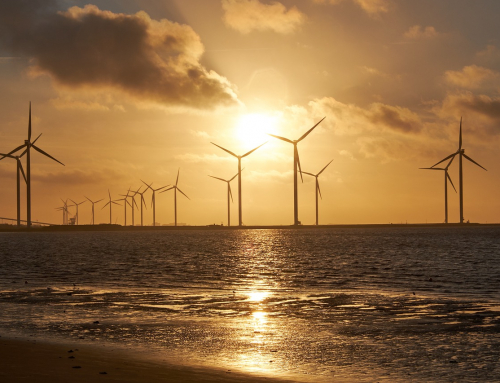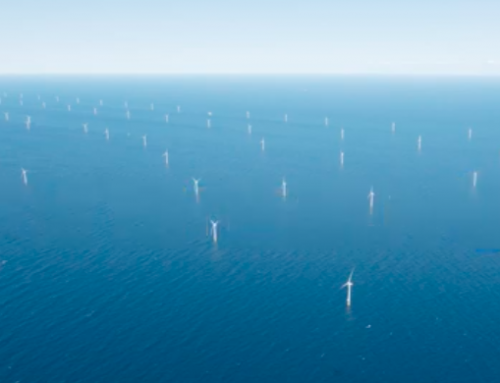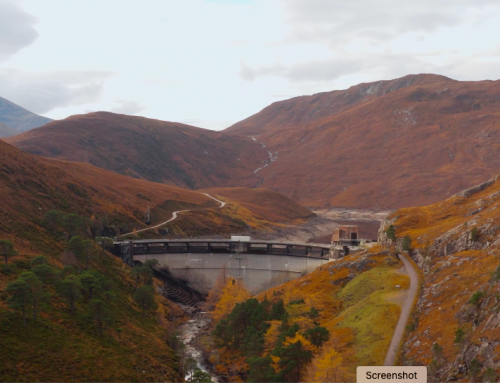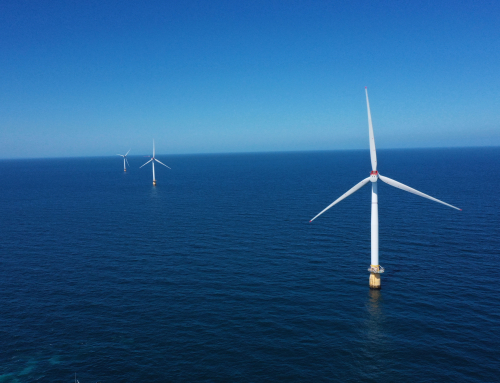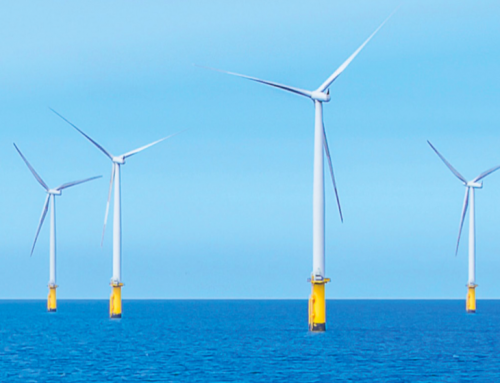By Julian Singer
Sea Twirl is a Swedish company with a novel approach to floating offshore wind farms. The basic idea is to use a vertical axis wind turbine rather than the more conventional horizontal axis. Small versions of the vertical axis wind turbine are occasionally seen on the roofs of buildings. The Sea Twirl version is shown below.
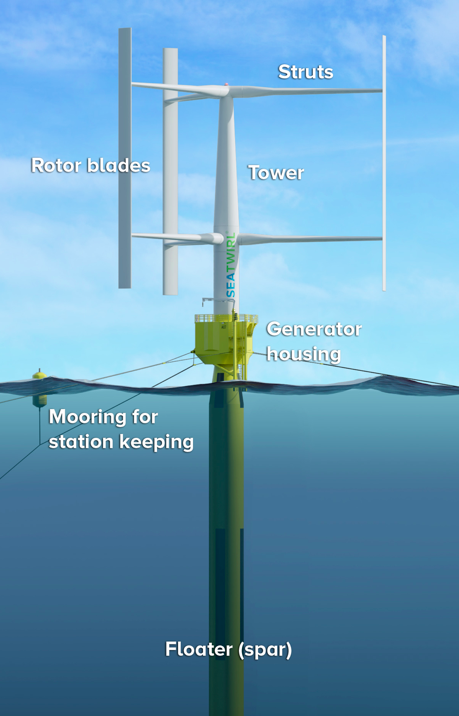
www.seatwirl.com
Wind causes the rotor blades to rotate, which turns the tower, the inner section of the generator and the floater below the sea surface. The floater is a long tube, weighted at the bottom but otherwise filled with air. The only static part is the generator housing which is moored to the sea bed.
Compared to the conventional horizontal axis the advantages are the simplicity of design and the low centre of gravity, with the most complex component (the generator) located close to the sea surface and hence easily accessible for maintenance or repair. There is also no need for the machinery to turn the blades into the wind, as there is for the conventional set-up.
It is a surprise that the Floater is rotated, as one would have expected friction in the water would have increased the inertia of the whole system so as to make it less efficient at low wind speeds. Sea Twirl, however, claim that the inertia is an advantage as it smooths out periods of varying low wind speeds and provides a more useful output: it is, in effect, acting as a short-term storage of energy. The main reason for the rotating Floater is that it minimises the load on the bearings in the generator, allowing them to be simpler and therefore in principle more reliable.
Vertical axis wind turbines (VAWTs) are considered less efficient than conventional Horizontal wind turbines (HAWTs). Sea Twirl does not address this issue directly, but argues that a farm of VAWTs is more efficient because the turbines can be placed closer together than in a farm of HAWTs without interfering with each other. Of course, more turbines increase the cost. Sea Twirl claim that this work has been supported by Sandia National Laboratories (a US government research entity).
Another factor to be considered is wind speed above the surface of the water. It is generally claimed that windspeeds are higher and more consistent as the distance above the surface increases (up to a certain point). The height of HAWTs has been increasing steadily, with the axis now reaching 140 metres above the water surface, whereas in Sea Twirl’s design the concept is to simplify by keeping the blades close to the surface. Newer HAWTs certainly operate at higher capacity factors (i.e. for the same nominal power they produce more energy), but how much of this is due to higher wind speeds rather than other factors is not clear.
Ultimately, the key factor is the Levelized Cost of Electricity (LCOE) from the two systems. Sea Twirl and Sandia claim that the LCOE of their VAWT farms will be 20 per cent lower than that of HWATs, and that they will eventually be able to produce electricity at €50 per Megawatt-hour (~£44). In the UK Contract for Difference Round 4 (2022), the strike prices in 2012 pounds for non-floating offshore windfarms were set at £37.25, while the sole floating windfarm, using a design from Wave Hub, was set at £87.3 per MWh. The latter price is intended to encourage new technology, so it is not clear how to compare it with Sea Twirl’s prediction.
In the meantime, Sea Twirl has been operating its small, early 30kW S1 prototype offshore Sweden for seven years and in March 2022 obtained a concession to install its 1 MW S2 unit off the Norwegian coast just north of Stavanger. There have, however, been legal objections although these seem to have been resolved recently. The company has been looking for other opportunities for its S2 unit, mainly in niche markets such as islands and remote seaside villages, or fish farms and desalination plants. It apparently wants to prove the technology near land before launching into the deep sea.
Sea Twirl has been listed on the Nasdaq First North Growth market since December 2016.

